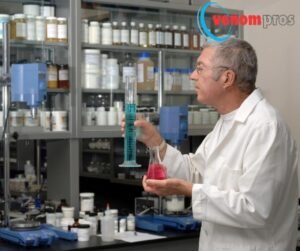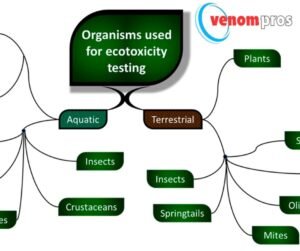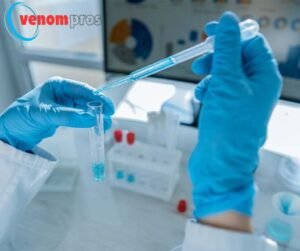
Toxicity Studies
In the era of computational biology, in-silico models have emerged as indispensable tools in toxicity studies. These models offer the promise of reducing the need for animal testing, accelerating drug discovery, and enhancing our understanding of toxicological mechanisms. Validating these models ensures that their predictions are not only accurate but also reproducible, providing confidence to researchers and regulatory bodies alike.
Understanding In-Silico Models in Toxicity Studies
In-silico models are computational simulations used to predict the toxicological effects of chemical compounds on biological systems. These models integrate data from various sources, including chemical structure, biological assays, and omics data, to predict potential adverse effects. They range from simple quantitative structure-activity relationship (QSAR) models to complex systems biology models that simulate entire biological pathways.
The appeal of in-silico models lies in their ability to screen vast chemical libraries quickly and cost-effectively. However, given their predictive nature, the accuracy of these models is paramount. An unvalidated model can lead to false positives or negatives, potentially resulting in the overlooking of toxic compounds or the unnecessary discarding of safe ones.

Steps in the Validation of In-Silico Models
Defining the Purpose and Scope
The first step in validation is to clearly define the purpose and scope of the model.Is it intended for use in drug discovery, environmental toxicology, or regulatory decision-making? A well-defined scope ensures that the model is tested against relevant data, making the validation process more focused and meaningful in Toxicity Studies.
Data Collection and Curation
High-quality data is the backbone of any successful in-silico model. For validation, it’s crucial to use curated datasets that are representative of the toxicological endpoints being studied. The data should cover a wide range of chemical structures and biological systems to test the model’s robustness across different scenarios.
Model Calibration
Calibration involves adjusting the model parameters to fit a subset of the data. This step ensures that the model can accurately replicate known outcomes. Calibration should be done carefully to avoid overfitting, where the model performs well on the calibration data but fails to generalize to new, unseen data in Toxicity Studies.
Cross-Validation
It involves dividing the dataset into multiple subsets, training the model on some subsets, and testing it on others. This process is repeated several times to ensure that the model’s predictions are consistent across different data splits in Toxicity Studies.

Performance Metrics
Various metrics can be used to assess the model’s performance, including sensitivity, specificity, accuracy, and the area under the receiver operating characteristic (ROC) curve. These metrics provide a quantitative measure of how well the model distinguishes between toxic and non-toxic compounds.
External Validation
To ensure the model’s generalizability, it should be tested on external datasets not used during the model-building process. External validation is critical for demonstrating that the model can make accurate predictions on new, independent data. This step is often required for regulatory acceptance.
Uncertainty Analysis
Every model has inherent uncertainties due to limitations in the data, assumptions made during model construction, and variability in biological responses. Uncertainty analysis helps quantify these uncertainties, providing a clearer picture of the model’s reliability. Techniques such as bootstrapping, sensitivity analysis, and probabilistic modeling are commonly used for this purpose in Toxicity Studies.
Documentation and Reporting
A well-documented validation process is essential for transparency and reproducibility. All steps, from data collection to model performance, should be thoroughly documented.
Regulatory Acceptance
For in-silico models to be used in regulatory settings, they must meet specific criteria set by regulatory agencies. These criteria often include rigorous validation and external validation, as well as adherence to guidelines such as those provided by the OECD (Organization for Economic Co-operation and Development). Achieving regulatory acceptance is a significant milestone for any in-silico model, as it allows the model to be used in decision-making processes for safety assessments.

Challenges in Model Validation
While the steps outlined above provide a roadmap for validating in-silico models, several challenges remain. In many cases, the data available may be biased towards certain types of chemicals or biological systems, limiting the model’s applicability in Toxicity Studies.
Another challenge is the complexity of biological systems. Even the most sophisticated models may fail to capture the full complexity of human biology, leading to inaccurate predictions. Furthermore, the assumptions made during model construction can introduce biases, and these must be carefully considered during validation.
Future Directions
The field of in-silico modeling is rapidly evolving, with advances in machine learning, artificial intelligence, and computational power driving the development of more accurate and sophisticated models. As these models become more complex, the need for robust validation processes will only increase. Future directions in model validation may include the use of more comprehensive datasets, improved uncertainty quantification methods, and the integration of multi-omics data to enhance model accuracy in Toxicity Studies.
Conclusion
Validating in-silico models for toxicity studies is a critical step in ensuring that these models can be trusted to make accurate predictions. A rigorous validation process, including data curation, model calibration, cross-validation, and external validation, is essential for building confidence in these models. As computational methods continue to advance, the validation of in-silico models will play an increasingly important role in the future of toxicology, reducing the reliance on animal testing and accelerating the development of safer chemicals and drugs.
Also read this;>Understanding Fish Poison: A Guide to Toxicity in Marine Life
Also read this;>“Skyward Symphony: A New Dawn in Gaming”






